The purpose of the work is to assess the development of green economy in agriculture and to identify the weaknesses and strengths of alternative farming systems.
Keywords: green economy, culture, agriculture, alternative farming system, fertilizer, soil fertility, environment, farming, world economy.
Agriculture faces the following challenge: in 2050, it will need to feed 9 billion people without damaging ecosystems and human health in an overall hotter climate. Today, because of the technologies used in agriculture, this sector of the economy consumes more than 70 % of the world's freshwater resources and accounts for more than 13 % of global greenhouse gas emissions. The use of these technologies is also responsible for 3–5 million cases of pesticide poisoning and more than 40,000 deaths per year.
«Green» agriculture is characterized by a shift in both high-value and subsistence farming towards the use of environmentally sound practices such as efficient use of water, extensive use of organic and natural fertilizers, optimal tillage, and integrated pest management.
Green economy in agriculture is characterized by complete or partial rejection of the use of mineral fertilizers and chemical means of plant protection and increasing the importance of biological sources of plant nutrition, biological and mechanical methods of protection. The paper presents proposals from the author on the development of green economy in agriculture.
Research aims and objectives. The aim of the work is to evaluate the development of green economy in farming and identify the weaknesses and strengths of alternative farming systems.
In accordance with this goal the following tasks were set and solved:
– to disclose theoretical aspects of green economy;
– to evaluate the development of green economy in agriculture;
– identify weaknesses and strengths of alternative farming systems for the development of green economy;
– identify possible ways to improve the development of green economy in agriculture.
Research methods. When carrying out the work, historical, logical, and systematic methods, methods of analysis and synthesis were used.
1. The concept and features of green economy
Modern conditions of society globalization at first glance indicate the need to plan not only the issues of ensuring the growth of production, but also to improve the quality of life of people determined by international standards, as well as the solution of environmental problems on the basis of compliance with environmental standards related to the formation of a careful attitude to the natural environment, its resource sources, as well as their effective use in production and economic activities. In these conditions it is extremely important to ensure a balance between the economic, production, transportation, environmental policy of the enterprise and the policy of the state. Such a balance can be achieved with modern approaches and methods to the management process based on the principles of green economy development.
A green economy is an economy that does not affect natural assets. The concept of green economy supports the conservation of resources and reduces the negative impact on nature. The growth of human quality of life is «neighboring» with the growth of natural capital. This is called «green growth».
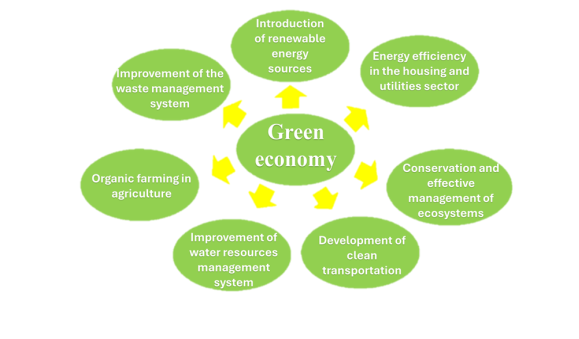
Fig. 1. Directions of the green economy
The goal of a green economy is to increase the well-being of society by reducing the pressure on the ecosystem. Seek a balance between social policy, economics and ecology.
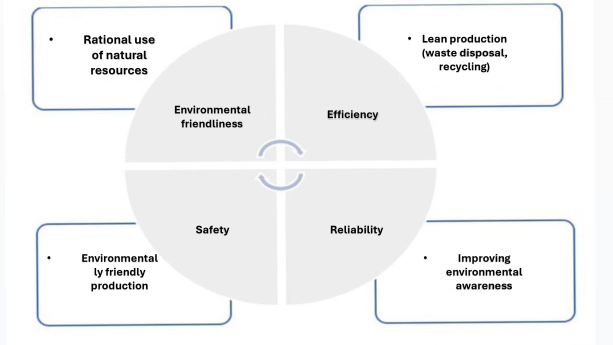
Fig. 2. Basic Principles of Green Economy
Sustainability Principle. Society must recognize that the Earth's resources are limited. Therefore, they should be used fairly, and ways of recycling should be sought. The economy should stay within ecological limits while providing opportunities for development. Everyone reduces waste, sorts of trash, saves water and reuses things.
Principle of justice and dignity. Nature should be protected everywhere, and the quality of ecology should be preserved for the next generations by common efforts, not at the expense of each other. Everyone should have access to water and energy.
Principle of governance and flexibility. The economy is «transparent» and responsibility for pollution is shared between countries, which must reduce harmful emissions. The economic system can adapt to cultural specificities but adheres to common environmental standards.
The principle of a healthy planet. The state should invest in nature, restore it, and support degraded areas.
Protect ecosystems and biodiversity.
2. Green economy in agriculture
Building green agriculture requires physical assets, financial investment, research, and increased competence in five key areas: soil fertility management, more efficient and sustainable water use, crop, and livestock diversification; plant and animal health management; and farm mechanization. «Green agriculture also requires institutional strengthening and infrastructure development in rural areas of developing countries.
Policy changes should focus primarily on reducing and eventually ending environmentally harmful subsidies that create a misperception of the true cost of unsustainable agricultural production, and on pricing and regulatory reforms that incorporate the costs of environmental degradation into food and commodity prices.
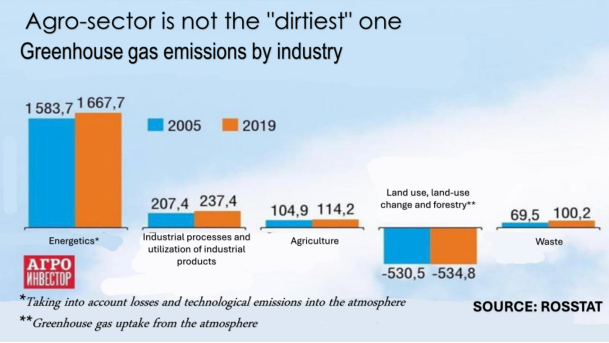
Fig. 3. Greenhouse gas emissions by sector
The analysis, carried out on the example of individual farms, shows that «green» agricultural technologies can significantly increase yields, especially on small farms. According to the modeling results, investing USD 100 to 300 billion per year in green agriculture between 2010 and 2050 could, over time, improve soil quality and increase global yields of critical crops by 10 percent over what would be achieved with current investment strategies. While such growth rates are not sufficient to ensure equitable access to food for the hungry, such growth is nevertheless necessary to meet the challenge of feeding a growing population.
The transition to a «green» economy has the potential to achieve sustainable development and eradicate poverty on an unprecedented scale. A green economy stimulates growth, income, and employment, and that the so-called trade-off between economic development and environmental sustainability is a myth, especially when natural assets, not just manufactured products, are considered in assessing a country's wealth. While the transition to a green economy will require large-scale investments, these investments can be mobilized through sound public policies and innovative financing mechanisms.
In agriculture, the green economy provides a more marked increase in employment in the short, medium, and long term than conventional development. To summarize, a green economy values and invests in natural capital. Organic farming practices significantly increase yields on non-commodity farms.
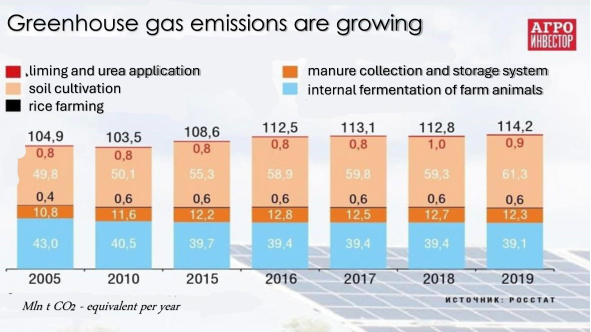
Fig. 4. Greenhouse gas emissions from agriculture
Sustainable development of farming means tillage technologies, labor automation, cooperation between small farms and large producers. In Russia, such projects are done by «Sovzond» on behalf of the Ministry of Agriculture. They track the condition of crop areas using images from space and analyze the data. In this way, it is possible to learn about soil moisture, the location of weeds and the health of crops.

Fig. 5. Map of crop types in the Tambov region
3. Problems and prospects of green economy in agriculture
Problems of green economy:
– Risks of decreasing competitiveness of the national economy.
– Growth of production costs.
– Strengthening of the role of the state in economic processes.
– Risks of bureaucratization and increased taxes.
– Difficulties with intellectual property rights.
– Possible increase in prices and loss of jobs in production facilities that do not meet environmental requirements.
– Difficult conditions for doing business within one country.
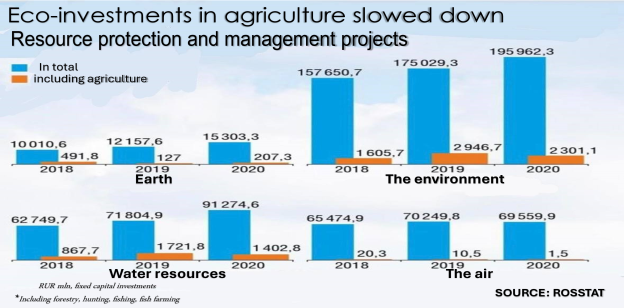
Fig. 6. Eco-investments in agriculture
The development of the «green» economy is currently experiencing certain difficulties, however, the «green» course taken has determined the prospects for the development of various sectors of the economy and production for the future. The use of an integrated approach will ensure the transition to energy-saving production technologies, reduce emissions of gases and waste from industrial activities and create comfortable living conditions for people and society.
Perspectives on the green economy:
– Reduced air, water, soil pollution.
– High rates of GDP growth and long-term well-being of the population.
– Increased efficiency in production and agriculture.
– Reduced risks of world disasters caused by climate change (greenhouse effect, ozone holes, global warming).
– Improvement of the situation on the labor market through the creation of new jobs.
– Adaptation of society to irreversible climate anomalies due to sustainable technologies.
4. Alternative farming systems in a green economy
All farming systems, both previously and currently existing, are characterized by the ways of land use, maintenance, and improvement of soil fertility. The way of land use is determined by the ratio of land and the structure of sown areas, and the way of increasing effective fertility is determined by the complex of agrotechnical and reclamation measures. These attributes determine the intensity and rationality of the farming system. Farming systems developed in sequence: primitive, extensive, transitional, intensive.
Table 1
Scheme of historical development of farming systems and their attributes
|
Farming technology |
Method of land use |
Method of soil fertility improvement |
|
Primitive: slash-and-burn, forest-field, fallow, swidden |
A smaller proportion of arable products are in cultivation |
Natural processes without human involvement |
|
Extensive : fallow, multi-field |
At least half of the arable land is under crops. The rest of the area is under clean fallow or perennial grasses |
Natural processes, human-directed |
|
Transitional: improved grain, grass field |
All arable land in cultivation. Grain crops predominate with perennial or row crops and clear fallow |
Human impact using natural factors |
|
Intensive: fruit-shifting, industrial-planting, free |
Almost all arable land is occupied by crops. The sowing of row crops has been expanded and intercrops have been introduced. intercrops |
Active human exposure through industrial means |
|
Modern: grain-fallow, grass-field, cultural and ameliorative, fallow land, etc. |
Intensive use of arable land |
Extensive use of technical tools, fertilizers, new varieties of agricultural crops |
Modern farming systems in their basis provide the growth of yields of cultivated plants, restoration, preservation, and improvement of soil fertility due to factors of intensification of farming — application of fertilizers, amelioration, irrigation, mechanization, automation, soil-protective, resource-saving and environmentally friendly technologies, improvement of tools and machines. All this in the sum provides the increase of economic efficiency of land use.
Therefore, all these means of intensification should be used considering the latest achievements of agricultural science and best practices to provide for highly productive use of suitable land for growing the most valuable high-yielding crops, varieties, and hybrids. The ratio between individual crops in crop rotation under intensive farming systems is established considering state, economic and personal needs in accordance with market requirements for different agricultural products, farm specialization and soil and climatic conditions.
Each modern farming system includes a complex of the following elements, the intensity and orientation of which determine the nature and features of the system:
– rational organization of the farm territory and crop rotations, providing for measures of struggle to increase the productivity not only of arable land, but also of other agricultural lands;
– system of soil tillage
– system of fertilizers;
– a system of measures to control pests, crop diseases and weeds;
– a system of reclamation and cultural technical measures;
– a system of measures to prevent soil erosion and combat its consequences;
– measures to protect the environment from pollution and useful micro- and macroflora from destruction;
– a system of varietal seed production;
– integrated mechanization of cultivation of agricultural
– crops;
– special agrotechnical measures (sowing dates, seeding rates, seeding depth, etc.).
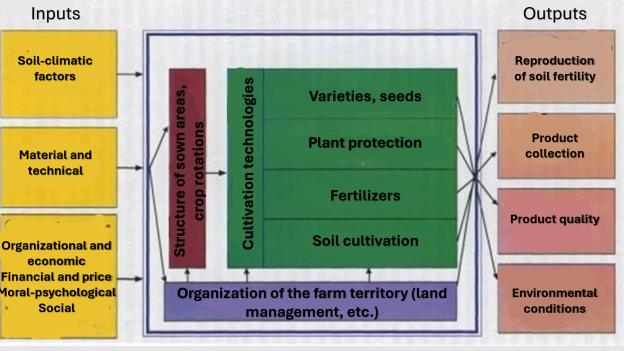
Fig. 7. Farming system
Modern agricultural systems
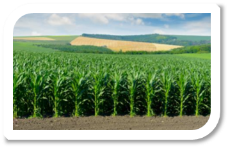
Fig. 8
Tillage (industrial plant) farming system:
– 50 % of arable land is allocated to intensive row crops;
– repeated and intermediate crops are used;
– provides a high level of output from 1 hectare of rotational area;
– is accompanied by high nutrient removal from the soil and physical stress on the soil (compaction, spraying) due to intensive mechanical tillage;
– soil fertility is maintained by applying high rates of organic and mineral fertilizers.
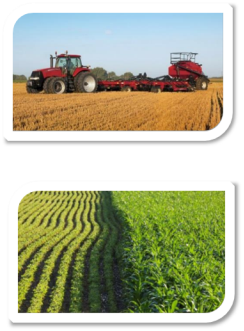
Fig. 9
Grain and fallow farming system:
– 75–90 % of arable land is allocated to cereals;
– 5–25 % of arable land is allocated to clean fallows;
– ensures high grain yield from 1 ha of rotational area;
– soil fertility is restored and maintained through the application of organic and mineral fertilizers, soil protection measures, moisture accumulation and clearing the soil of weeds.
Grain-tillage farming system:
– the main part of arable land is occupied by grain and row crops;
– provides the highest yield of crop production from 1 hectare of crop rotation area;
– soil fertility is maintained with high rates of organic and mineral fertilizers, rational soil-protective tillage, and herbicides.
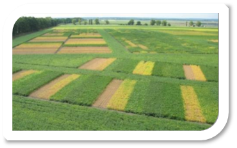
Fig. 10
Grain-grass farming system:
– half of the arable area is occupied by cereal food and forage crops; — there should be crops of perennial grasses and an absence of clean fallows;
– grain yield from 1 hectare of rotational area is average, with a high yield of succulent fodder and hay;
– is characterized by high soil-protective efficiency due to a significant share of perennial grasses and continuous crops in the structure of sown areas.
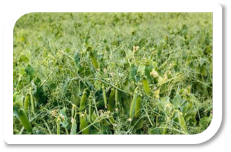
Fig. 11
Intercropping system of farming:
– cereal crops occupy no more than half of the arable land area, and the remaining part is occupied by row crops and legumes;
– soil fertility is maintained and increased through crop rotation — alternation of cereals, legumes and row crops, use of fertilizers and soil protection measures.
Soil-protective farming system:
– soil protection from water and wind erosion;
– grain-fallow four- and five-field crop rotations, where clean fallows occupy 20–25 % of arable land; — on clean fallows use coulisses, strip tillage.

Fig. 12
Alternative farming system:
– ecologization and biologization of farming;
– farming on the basis of maximum reutilization and recycling of all farm wastes;
– increasing farm profitability;
– high quality of agricultural
– products;
– reduction of environmental pollution; — preservation and even increase of soil fertility.
Biological or organic farming system, based on the exclusion or significant reduction of the use of mineral fertilizers and pesticides, is becoming increasingly popular in the world. Its main advantages are high quality of agricultural products, reduction of environmental pollution, preservation and even increase of soil fertility.
Alternative farming systems
Green economy in farming is characterized by complete or partial refusal of the use of mineral fertilizers and chemical means of plant protection and increasing the importance of biological sources of plant nutrition, biological and mechanical methods of protection. The author systematizes alternative farming systems.
Table 2
Alternative cropping systems
|
Сountries |
Alternative farming system |
Characterization of farming system |
|
USA, Canada |
Organic |
The production, processing and storage of crop products takes place without the use of synthetic fertilizers, pesticides, and growth regulators. Only materials consisting of animal, plant and vegetable substances are allowed to be used of mineral origin. Great importance is given to crop rotation, sideral crops, primarily legumes, use of crop residues and organic waste of non-agricultural origin. Tillage, depending on the conditions, is minimized and emphasizes soil erosion protection; no-till disc implements prevail. |
|
France |
Biological |
The use of chemical fertilizers, especially easily soluble ones, is not allowed. The use of organic fertilizers is allowed, which are often pre-composted; techniques are used that increase the biological activity of the soil, neutralizing excessive acidity. Much attention is paid to a well-founded crop rotation with sparing saturation with single crops and the use of sideral crops. Preventive measures, mechanical, biological and fire methods are used to control pests, pathogens, and weeds. |
|
Sweden, Switzerland |
Organobiological |
It is based on the creation of «living and healthy soil» by maintaining and activating the activity of soil microflora. Fields are vegetated as long as possible, crop residues are incorporated into the topsoil, crop rotation is saturated with legumes and leguminous crops, only organic and some slow-soluble mineral fertilizers are used. Plant protection is like the biological farming system. |
|
Germany, Sweden, Denmark |
Biodynamic |
Farming is carried out considering not only earthly (natural) but also cosmic rhythms; the influence of cosmic forces on agricultural production is used, special biodynamic preparations are used, for example, «humus», «flint», «compost», extracts, decoctions, and fermentation products from plants. All agronomic practices are recommended to be carried out in favorable periods, harmonized with the phases of the moon and the zodiacal cycle. |
|
Spain, Italy, Greece |
Ecological |
Limitation of pesticide use and flexible use of mineral fertilizers. The use of water-soluble forms is allowed, considering the mechanical composition of the soil. |
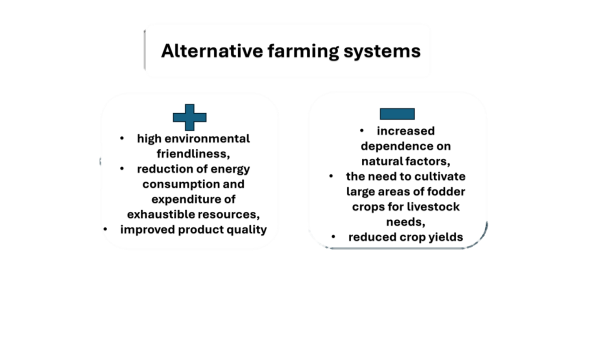
Fig. 13
I also identify the weaknesses and strengths of alternative farming systems for green economy development.
Conclusions
Green economy assumes biologization, i.e. intensification of biological factors to reduce the negative impact of anthropogenic factor of farming and at increasing its efficiency for maximum realization of potential productivity of crops and reproduction of soil fertility in accordance with ecological principles of nature management.
The main factors of biologization of farming:
– knowledge and rational use of the laws of nature;
– reproduction of soil fertility, improvement of agronomic and biological properties, mainly through crop rotation;
– use of high-yielding varieties and hybrids adapted to specific soil and climatic conditions;
– development of scientifically based crop rotations;
– maximizing the use of biological nitrogen in agrocenosis;
– use of all types of organic fertilizers, expansion of the share of sideration, limited use of mineral fertilizers, taking into account the optimization of plant nutrition;
– ecological system of plant protection, application of biological methods and means;
– differentiated system of soil tillage, considering the requirements of crops and soil and climatic conditions.
When transferring agricultural land use to the principles of biologization, it is necessary to solve many issues, the main of which are reproduction of soil fertility because of preferential application of natural factors, modification of the system of measures to protect crops from harmful objects, maximum realization of the potential of agrotechnical productivity resources. At the same time, it is necessary to solve economic and social problems: reducing the costs of agricultural production, increasing the profit and profitability of production, increasing the quality of life of people.
References:
- Afontsev, S. A. The world economy in search of a new growth model / S. A. Afontsev // World Economy and International Relations. — 2014. — № 2. — С. 3–12.
- Botavina, R. N. Ecological aspects of the «green economy» in the system of economic growth in Russia / R. N. Botavina // Modernization. Innovations. Development. — 2016.-№ 7.-С.142–147.
- Johnson M. Green economy as a system / M. Johnson, D. Saskevich // Harvard Business Review. — 2020. — № 1/2. — С. 87–95.
- Rodionova, I.A.; Lipina, S. A. Green economy in Russia: model and development forecasts / I. A. Rodionova, S. A. Lipina // Fundamental Research. — 2018. — № 2. — С. 5462–5466.
- Rosreestr (2022). Retrieved from https://rosreestr.gov.ru/site/activity/gosudarstvennoe-upravlenie-v-sfereispolzovaniya-i-okhrany-zemel/gosudarstvennyy-natsionalnyy-doklad-osostoyanii-i-ispolzovanii-zemel-rossiyskoy-federatsii/.











